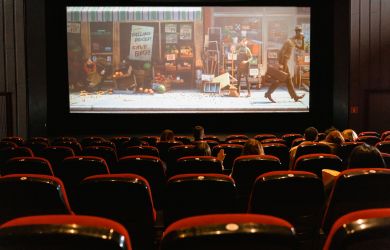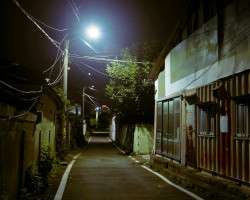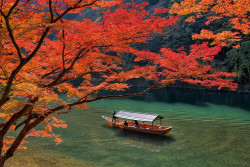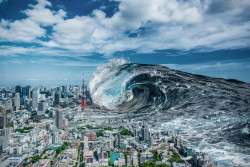
March 3, 2006
Beyond the Taj Mahal
Three cities off the beaten path reveal India’s Heart and Soul
By Metropolis
Originally published on metropolis.co.jp on March 2006

Photos by Jeffrey Tanenhaus
Outside of Delhi, Jaipur and the Taj Mahal at Agra—India’s “Golden Triangle” of tourism—lies another enticing threesome. Pushkar, Jojawar and Udaipur offer escape from chaotic metropolises that assault the senses and allow travelers to enter the relative calm of Rajasthan’s arid countryside.
Hippies and Hindus make an odd couple, but that’s whom you’ll find in a mellow setting 400km southwest of Delhi. Pushkar is a holy Hindu village that is said to have arisen where the creator god Brahma dropped a lotus flower to kill a demon. Bathing ghats (stairs) and whitewashed temples line Pushkar Lake, the spot where the lotus petal fell. Of the village’s 500 temples, the one enshrining Brahma is the most revered—and, curiously, is one of only two on the subcontinent dedicated to this important god.
Hindus are drawn to Pushkar’s sacred lake, which cleanses the souls of bathers during the full moon phase in late October or early November. This festively coincides with the world’s largest camel market, also featuring cattle and other livestock that outnumber residents by 4:1. Camel auctions, races and beauty pageants put this village of 13,000 on the international map for one week every year.
You need not be a pilgrim or camel trader, however, to join the masses flocking to Pushkar. Here, mysticism intersects flower power. Reggae and trip-hop echo from cafés in the shadows of ancient temples. Artsy shops along Sadar Bazaar Road vend earthy threads, ganja paraphernalia and handicrafts like mobiles strung with colorful stuffed camels and elephants.
Hippie expats, tourists and locals gather on the lakeside stairs of Kotah Ghat, underscoring Pushkar’s spiritual roots and communal feel. An enormous bull waddles down the ghat to rinse off. Swatting flies, his tail swings in synch with an elderly man in a dusty robe tapping

Further south, Jojawar is so far off the beaten path that it goes unreferenced in The Rough Guide to India, which is no small feat considering the guide is as thick as a telephone book. Jojawar is a convenient and serene layover when traveling on cratered roads with death-defying drivers between attractions in Jodhpur, Jaipur and Udaipur.
The heritage hotel Rawla Jojawar makes for a blessed retreat where magpie calls replace motorized rickshaw horns blaring the “national anthem” of India. The hotel began as a fort in the 18th century, and the property remains a noble family’s heirloom. After nine generations, the residence has been carved up into simple yet spacious double rooms.
Traditional meals freshly prepared from family recipes are best taken in the courtyard with live musicians. Succulent braised chicken and sweet red carrots stewed in mustard oil, turmeric and cumin are worth a second helping or, better yet, an extra night to fully savor the essence of the countryside.
Travelers can bounce along in a locally made Mahindra jeep on a safari, past cumin seed harvesters and sheep shearers. Moving deeper into rural Rajasthan, we sipped afternoon tea on a hill overlooking water buffalo plowing the bed of a receding lake. Green parrots flocking through the valley and wild peacocks spreading royal tail feathers add to the serenity.
Another excursion is a slow train ride weaving through the Aravalli Hills, home to langur monkeys always on the take. The primates acrobatically scale carriages and grasp window bars to snatch offerings of crackers and bread, but—speaking from experience—can turn vicious if taunted. If you’re more of a people person, you can feel like a celebrity by waving to children who magnetically chase the bumper of a 1928 Ford convertible as the hotel owner chauffeurs you around town.

Venice of the East, City of Dawn and the jewel of the ancient Mewar kingdom are telling nicknames for romantic Udaipur. Droughts have reduced monsoon-starved Lake Pichola to puddles, but in its center the gleaming white Lake Palace Hotel remains the most recognizable Indian icon after the Taj Mahal.
Splendor awaits nearby at the City Palace. Ostentatious Moghul interiors scream royalty, who indeed resided here and in the Lake Palace. Labyrinthine corridors sparkle with peacock mosaics, colored glass, jewel-encrusted mirrors and a Victorian crystal gallery with a crystal bed. Udaipur School paintings—exquisite miniatures of court life and fierce battle scenes—are more subtly delightful.
James Bond fans may want to re-enact the rickshaw chase scene in Octopussy on the way back to their hotel. Although built after the filming, the Oberoi Udaivilas, with its private splash pools overlooking Lake Pichola, comes highly recommended.
Intricate marble and sandalwood carvings and 1,444 pillars inside Jain temples at Ranakpur are a must-see, 96km away. Closer by, travelers can discover what remains of Nagda, the Mewar capital with temples dating from the seventh century.
A holy village with a hippie vibe, a nobleman’s estate embracing pastoral life, and a nearly empty lake in a city brimming with culture make the lesser Golden Triangle of Pushkar, Jojawar and Udaipur shine just as brightly as its more famous cousin.
Air India and JAL fly directly from Tokyo to Delhi. National carriers connect to Jaipur and Udaipur. India is most comfortably visited between Oct-Mar. Hindus smear one another with colored powders during the spring festival of Holi, Mar 14-15. Catch women in their finest dresses during Udaipur’s Mewar festival, April 1-2. Four-legged creatures and two-legged pilgrims descend upon Pushkar Nov 2-5 for the full moon and camel mela. An overnight stay in Jojawar is increasingly being included on guided tours of the region. Driving in India is downright dangerous; don’t hesitate to hire a driver/guide to avert near misses with top-heavy Tata trucks and lumbering Brahman bulls.
[geo_mashup_map]







